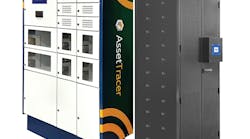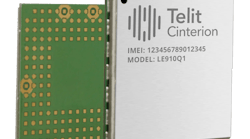There's a new labeling technology on the market that's designed reduce failure rates of radio-frequency identification tags and to help consumer-goods manufacturers meet retailer RFID mandates.
The technology, developed by NCR Corp.'s Systemedia division, will be showcased for the first time at next week's EPCGlobal U.S. Conference 2004 in Baltimore.
Typically, about 20% of the RFID labels in a roll are defective chips, but there's often no way to differentiate the functioning and nonfunctioning tags until after they've been placed on products, says Peter Bloch, product marketing manager for NCR's Systemedia division. To address this problem, NCR has created an RFID-labeling system that can test RFID chips inlaid on labels as they are printed and void defective labels before they're affixed to products.
The new system increases the reliability and consistency of RFID labels for cases and pallets to 100% accuracy, Bloch says, as opposed to the average 80% accuracy that's typical today. "That's important to the manufacturers because it increases their throughput, it decreases the operational time that they need to print those labels, and the reliability of the label helps them integrate other high-speed applications," Bloch says.
But AMR Research analyst Kara Romanow is skeptical about NCR's claim that its RFID-labeling technology can offer up to 100% accuracy. On an average, 10% to 12% of labels are defective, which means they're dead on arrival. As a result, they offer only 80% to 90% read rates. Although NCR is able to eliminate that 10% to 12% of dead-on-arrivals, the new NCR system can't handle the physics challenges that interfere with accurate RFID reads, Romanow says. "What NCR does not address is how to get beyond the non-RF-friendly products. In most cases, products with high-liquid, high-metal content are very hard to read through no matter what kind of label is placed on them."
Labeling is just one piece of the puzzle, however, and NCR has done a good job addressing the other pieces, Romanow notes. The system includes thermal transfer ribbons, which can eliminate static; data-collection devices; software for printer and label formatting; and a suite of online ordering, tracking, and payment services called eMedia. In addition, the labels meet either the Class 1 or Class 0 protocol standards, which retailers such as Wal-Mart Stores Inc. are requiring manufacturers to support.
NCR has been testing and manufacturing the product for the past six months. The company has not yet handed the system over to businesses to test, but manufacturers attending the EPCGlobal conference will be among the first to preview the labeling technology. It's slated to ship in North America by January. NCR also plans to make the technology available in Europe, the Middle East, and Asia once global standards have been finalized, and will add an expanded assortment of customized printed labels and sizes to fit individual needs of manufacturers next year.

